The main piling works at the new shipbuilding facility at the BAE Systems yard in Govan, Glasgow, have been completed.
The firm responsible also report that the cofferdam pile installation is due to complete later this month.
📸 Project update 📸
The main piling works at our @BAESystemsplc Glasgow site have been completed with the cofferdam pile installation due to complete later this month.#BuildingTogetherUnlockingPotential pic.twitter.com/69lWITj35c
— McLaughlin&Harvey (@Official_McLH) March 19, 2024
The massive facility at Govan represents a huge boost in capability for UK naval shipbuilding.
The new ‘frigate factory’ will consist of more than 6,000 tonnes of steel and 20,000m3 of concrete. It will be able to fit two Type 26 Frigates side by side.
Recent drone shots show the rapid progress of the new 'frigate factory' at BAE Systems in Govan. pic.twitter.com/GNdbuURdkd
— George Allison (@geoallison) March 18, 2024
For the avoidance of doubt, the drone footage was obtained legally by a qualified person in adherence to UK drone legislation and guidance. In addition, the drone is insured, and a flight plan was submitted using drone safety software.
Below is how the site looked last year.
Work has started on a huge expansion of the BAE Systems yard at Govan, with excavators currently filling in the old 'wet basin' to make way for a huge new 'frigate factory'. Read more here: https://t.co/uBquNHihd9 pic.twitter.com/zsgdzkX9Lx
— UK Defence Journal (@UKDefJournal) February 14, 2023
I previously reported that planning permission had been granted for a huge new shipbuilding hall at the BAE Systems site in Govan, with work on the first ship to be built in the facility starting soon.
It is hoped that Type 26 ships 3 to 8 will be assembled in this facility, with the first two being assembled outdoors. HMS Glasgow is shown below when she was being put together on the hard standing, adjacent to the wet basin area after she was built in sections in the existing build hall and joined together.

The new build hall wil allow ships to be built indoors, protecting them against the elements and would form part of an effort to modernise the yard. In terms of dimensions, the shipbuilding hall will be approximately 81 metres wide, 170 metres long and 49 metres high to the building ridge line. This represents a massive expansion of capabilities and capacity at the yard, as let’s not forget, the original build hall will still be available for use.


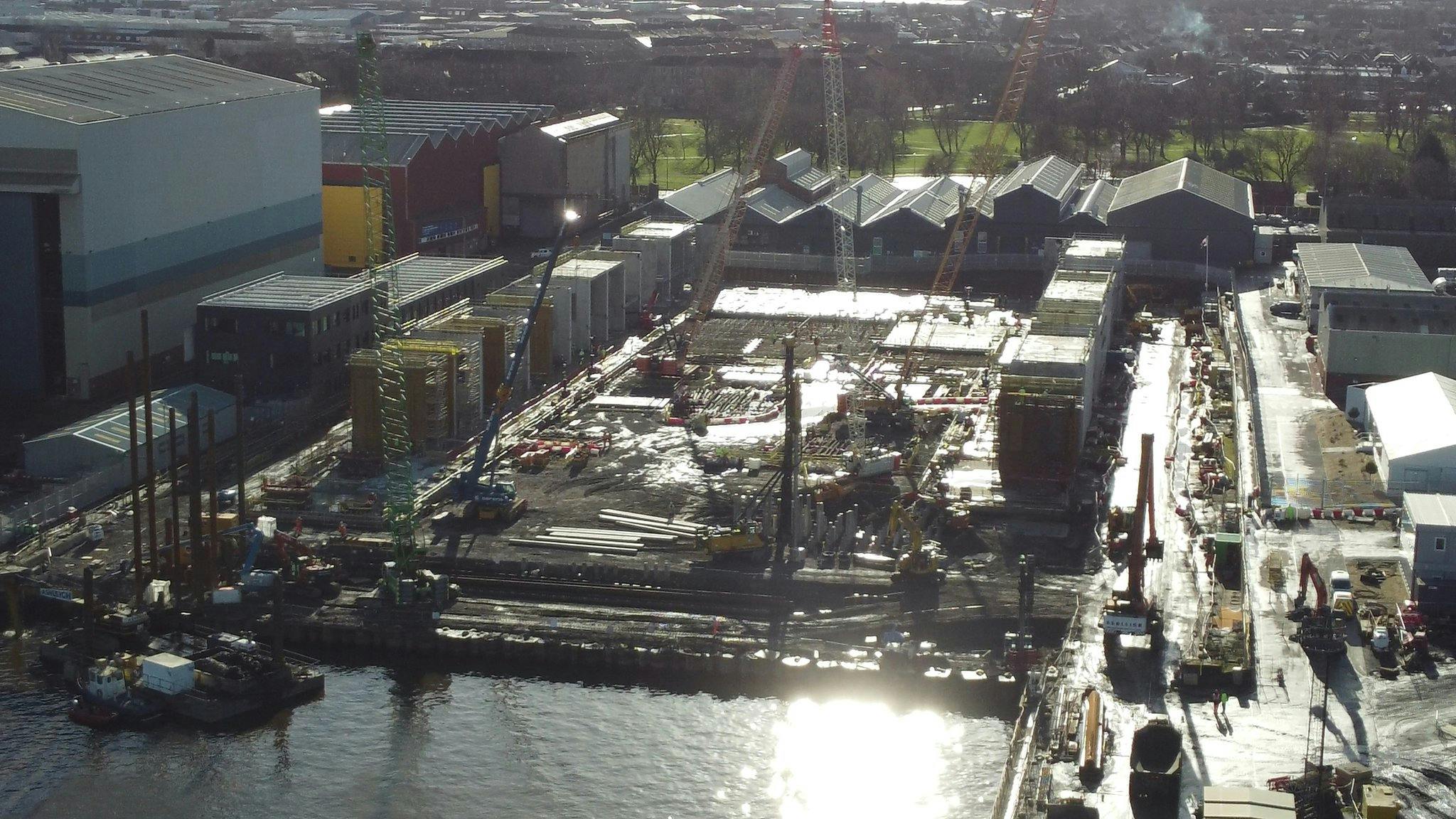
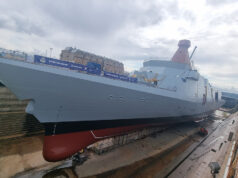


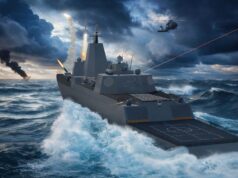
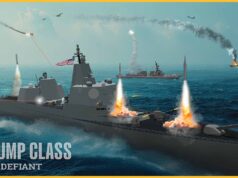
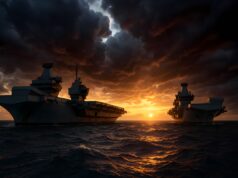


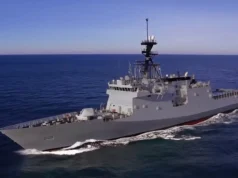

Is that slipway ever likely to be used for any future programme now? The barge idea just seems more practical these days so I wonder if there might be future development there.
Personally, I just think the whole Barge/Loader thing a bit odd…. Having a Slipway negates having to buy and maintain both in the longer term….. But then again, It’s only Tax payers Money….
It’s safer, it means the ships hull doesn’t come under any stress when launching. Also its the company paying for it.
That was my thinking the potential stress on the hull esp in modern ‘lighter’ designs might be a factor I don’t know. I may be biased by the fact my grandfather as a child was plucked from the Thames by a brave onlooker during the Albion launch disaster, otherwise I wouldn’t even be here. When was that slipway last used I wonder and for what, does anyone know?
Crikey….. Your Grandfather was a lucky man…… Slipways are still used all over the World, I can’t really see the problem.
What happened to Albion? An older Albion I assume, not the LPD
1896 when Thames Ironworks built some of the best warships in the World including many sold to Russia, Prussia and Japan where they were much admired. She was a pre dreadnought obviously, but pretty big for a ship launched at the mouth of the River Lea into the Thames. It always drew large crowds and my Grandfather like many others was on a rather humble wooden structure that were common at the time and the wash collapsed it throwing hundreds into the river and sadly killing 40. My grandfather was one of the lucky ones. Chillingly you can find film of the aftermath at the BFI and other sites, it being one of the earliest filmed launches. There are various memorials to it and Memorial Park near West Ham Station where there is a plinth with the names of the dead. Ironically I walked out of a pub in Conwy last Summer called the Albion looked up at the pub sign and saw the very Albion my Great Grandfather (his dad) worked on as a shipwright displayed upon it. Rather spooky considering I was in North Wales.
HMS Duncan i believe. it was a great sight watching her launch
Christ…. If these ships are built so fragile…. I’d hate to be on one in a Force 9…. 😯
I suspect it is more to do with the size of the ship and the width of the river. Just safer all around to hire a submersible barge and then float it off.
Size and the width of the river is nothing to do with it. Govan is the former Fairfield’s yard and they quite happily launched HMS Anson via a slipway.
More recently they launched 5 T45 from the slipway you can see right in front of HMS Glasgow, and they did it with a lot of rooms to spare and 300 tonnes less drag chains than Daring used down at Scotstoun (that was a bit tight).
It is way quicker, cheaper and safer to build in the halls and launch either via a ship lift or barge. And you can actually “launch” the ship in a far heavier and complete condition.
Just asking but…. how is it cheaper ? …. the Slipway is there, it’s been there for years…. the Loader Barge/Ship Lift are all extra and they require decades of maintenance/upgrades…..Maybe i’m just looking at it from a simple viewpoint…. but it just doesn’t add up…… 🤔
Understandable as all you are thinking about is the end of the process and yes why not use gravity to launch a huge lump of metal into the water. Common sense !
But that isn’t where the real costs and savings are, it’s in the actual production and assembly of the ships themselves.
Unlike Merchant ships, warships are built out of higher grade steels and need far greater control in the assembly / weld process. Otherwise it fails QC and has to be stripped out and redone.
Try doing that outside with just a bit of Tarpaulin between you and the rain, snow, sun, wind you get in the U.K.
So the ships are built up from sub assemblies, sections into Megablocks and a lot of the equipment is pre fitted inside them before they go to the Assembly Hall and joined up with others.
The STS are also used to move the Mega blocks from Block Assembly hall to the Ship assembly hall, so are there paid for anyway.
As for the Barge it’s often needed to move Mega blocks from other shipyards to the assembly yard. That’s how the T45 and the QE’s were all built. They aren’t very expensive.
And there you have it 150m long, 5k ton ship being taken out of the hall waiting to enter the water. And there is no way you can get it onto a sloping slipway.
There are 2 alternative ways that are used but both are far more expensive to either build or operate / maintain.
Firstly you can build a covered Slipway where you can assemble the Megablocks undercover on the slip and then launch once finished.
France builds its FREMM this way but they are way smaller than a T26, and construction costs for a double one would be astronomical. Which is why no one’s built one, and no one even builds smaller ones these days.
Secondly you build the Assembly hall and add on a Ship lift, in line with the hall, but you still need the STS to get the ship out and onto it. However quite how you’d do that on a river, no idea. And again they are mega money to build and maintain. UK has 2 one at Faslane and the other at Barrow.
To give you some idea of either of these, go onto Google Earth and look at the Devonshire Hall at Barrow, that’s an assembly hall with a Shiplift. But a double covered Slip would be a similar size.
So bottom line is the movers and barge method works fine and is way cheaper than the alternatives.
Which is why the 5 T26B2 are cheaper than the 3 T26 B1s.
Well at least I was right about the safer bit…😊
Makes sense to me and I doubt it’s in reality more expensive. Just makes it all more controllable and predictable I would presume.
HMS Howe.
Don’t know the situation is here but as a generalisation there have been many an incident when launching large ships into rivers with very limited safety margins which is one of the supporting reasons larger ships stopped being built in London. The last at TI was the 20,000 ton Thunderer and that was a very complex launch apparently. Never forget that last image of Brunel less than a mile away standing next to all those chains used to prevent the Great Eastern from hitting Millwall. Not that they were needed in the end sadly. Just seems more logical to go the less dramatic route.
phase 2 will probably see the slipway is partially filled in so the loader can use it with the new halls extend to 200m+ filling in the remainder of the old basin. tbh not sure why they haven’t done that already to give them some space to manoeuvre into the new halls. for the additional cost it seems like a missed opportunity…. but at least its coming along nicely
I thought they were keeping it just in case ordered a couple more T45’s ? 🥴
“OK Lads does anyone remember if bow section is going up the Slip or down it, and which block is next ?”🤣
You are running out of river. Just digitally recreate those old buildings behind the hall and then knock them down. The slipway is more important than the old buildings BAE wanted to get rid of.
…or in the Black Sea 🤣
So long as the hulls are not made of that extremely high grade Chinese steel we should be alright Frank
The barge is a commercial hire item and you still need the loaders as that’s how you move the Mega Blocks.
This method is used world wide and is far more cost effective than outside on a slipway. Which is why the cost to the Taxpayer for the final 5 is significantly less than the 1st 3.
Oh…. well I’ll take your word for it then….. Appledore just used to open the doors and slip them out…. but I guess hiring private Barges and Loaders is the way to go…..
Last used for the T45 builds and I can’t see it being done that way again as it was an “interesting” way to build a ship. If you look at it there is a gap in the slipway and that was where the completed Mega Blocks were moved in sideways onto the slipway. They were then skidded up or down depending on bows or stern.
I would have loved to have seen it being done, as it must have been impressive.
Basically you have to assemble the ship inwards from the Bow and Stern Mega blocks, then add in sequence till you have 2 halves. Then insert a pre built concrete and steel section of slipway to fill the gap and slide it all together. Weld it up and launch.
It was fascinating watching the time lapse from Rosyth as they floated in the megablocks from the barges, prepped them and then slid them together for the carriers. Now that was some impressive engineering work. I mean four blocks the the same size as a Type-45 in tonnage being slid together is definitely not something you see every day.
Barge or dry Dock as with the Scotstoun. The slipway would be ideal for building parallel midship blocks for larger ships on level ground, particularly commercial, that are too heavy for goliath cranes and not subjected to as much stress, the block then moved to the slipway. A feeder yard to a potential Inchgreen shipyard using the Inchgreen drydock. Much fitting out done in which launch mass may mean not the full section with upper works or top part of hull (in complex ships, not tankers) is left off if the hull if to heavy. I think this is what the previous owner of Fergusons wanted to do when BAE wanted to let go of Govan as it does not own the facility at Govan. The slipway is a potential asset. Cruise ships have been built this way in Italy and Cammell Laird built and launched a cruise ship block like this year’s ago.
I look at this and see the old with the new, the slipway which had the last 5 T45 launched from it and this amazing new Frigate Factory from which the final 5 T26 Frigates will emerge.
Then I just want to scream every single profanity I know at the present Governing Party and an establishment that doesn’t hold any of these idiots to account.
Here we are in 2024 and are screaming blue bloody murder at MOD about not having enough of anything except BS, incompetence and risk avoidance.
David Cameron promised 13 T26 in 2014 to be built in Scotland, then after that changed it to 8 T26 and 5 T23 because we couldn’t afford 13 T26.
BAe only received an order for 3 T26 so based on that wouldn’t fund the investment for a Frigate Factory. I completely get that as I wouldn’t have funded it either.
So the 1st 3 cost £1.31 billion each but later when the 2nd 5 were ordered, BAe funded the Frigate Factory and new Plate Line. The increased efficiency (and now having a competitor up the road) enabled BAe to agree the cost for the 2nd 5 at £4.2 Billion or £840 million each.
That’s £8.13 billion for 8 ships.
And we elected these idiots.
By my reckoning for the same overall budget we could have just about had 10.
Using the existing slipway might just have saved a few Million £££’s though….
I suspect that if the T26 is as good as it is supposed to be there will be more orders – same goes for T31. Ships are expensive nowadays. T26 is what 10 times the cost of a T23. The main issue is inflation & loads of expensive kit being piled onboard. The T31 plan at least introduced a little competition into the mix. Not a bad thing.
Blaming the politicians is the biggest waste of effort ever. Parties of all flavours have moved things forward otherwise we wouldn’t have T45, Carriers etc.It would have been dead easy for either Labour or Conservative to cut those out and leave defence a wasteland – which it is not.
I know this is a radical idea but if we had just ordered 6 to start with and got the build hall the savings could have been just that, actual savings for the taxpayer or allow for other critical work to be done.
The new build hall should have been developed around a covered drydock as the main assembly area. The basis of that was already there and could have been easily modified.
Flooding the dock would be a simpler method of float out . It’s been a well used practice worldwide for a variety of ship types . Also this type of facility could be used for future upgrades or refits . Seems like a wasted opportunity .
That was BAE Scotstoun.
I’m talking about how Govan should have been developed . Nothing has been done to develop Scotstoun as a modern covered build facility utilising the drydocks there. It’s the same old yard as it’s always been for decades .
My first taste of work was at Govan shipyards in 1982 under thatchers Y.O.P job scheme ,the yard was some place and still is, it’s good to see that expansion for British shipbuilding,I would love to see the return of great shipbuilding names ,vosper Thorneycroft ,Appledore ,harland and Wolfe (I know they do other engineering projects like wind turbines etc)well I hope the politicians have a strategy for the shipbuilding in this country, idiots gave over to making money for fxxxxxxg banks,I know in my heart that won’t happen,our industrial capacity must be accelerated big time but the tech for environmentally sound projects ,steel manufacturing that can be done very environmentally friendly and use recycled scrap ,